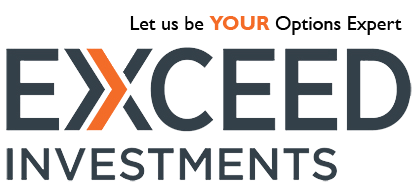Rich, smart, and good looking. There has to be a catch.
I recently came across a 7 year note offering 300% uncapped upside participation in the Goldman Sachs Momentum Builder Multi-Asset 5 ER Index (“The GS index”) with full principal protection. One of the best headline offerings you will ever see; to put it in perspective, a typical S&P note of the same duration would offer about 65% participation.
How can this note offer a return that is so compelling? As I have pointed out in prior blogs, there is no free lunch. Return is generally a function of risk, so there must be something more beneath the surface.
Let’s investigate the underlying index.
The GS index is a momentum-driven low volatility strategy that creates a basket of the best recent performers among a selected group of 14 ETFs across six asset classes. (The GS index is almost identical to the JP Morgan ETF Efficiente 5 Index, which has raised well over $1 billion in AUM since issuance. Recently, an ETF based on the Efficiente 10 index launched.)
The baskets are rebalanced monthly by selecting the portfolio which would have generated the best historical returns for the past 6 months AND (here’s the kicker) had less than 5% annual volatility. Since volatility aligns with risk and potential upside, this volatility cap provides a natural limitation on the potential upside of the index. The GS index will also be rebalanced inter-month if at any time the annualized volatility exceeds 6%, in which case some assets are moved into a money market ETF. This potential shift to cash would act as a further reduction in risk and potential upside.
So we have now identified a limiting factor to potential index upside, which balances out the great investment characteristics of the structured note. There is limited risk which should result in limited reward.
Now let’s introduce a second limiting factor.
There is a fee incorporated into the index methodology which further reduces return. The fee is equal to the 3 month LIBOR + 0.50% annually. (e.g., if LIBOR = 0.25% and the returns of the underlying index components for an annual period are 5.75%, actual returns for the index will be 5.00%) Thus, a high interest rate environment can dramatically reduce index returns.
In addition to the sensitivity around interest rate exposure related to the fees, the current index holdings are also heavily weighted to asset classes with interest rate risk such as fixed income and real estate. As a result, a meaningful increase of rates from current levels should result in both adverse performance of the portfolio and added fee costs. This second limiting factor illustrates a path of which ultimate performance of this note can be very limited.
Let’s do some technical analysis:
Now that we have an idea of what the relevant index represents, let’s deconstruct the note into its three main components:
- Credit Portion (estimated value of $807.59 or 80.8%): The market value for GS 7 year credit is deduced by adding their CDS rate to treasury. I estimate an annual yield of 3.01% and can calculate the Zero value simply by dividing the face value ($1,000) by the product of the yield amount (3.01%) to the power of the duration in years (7). This results in a value of $807.59 or 80.8% worth of the note
- Fee/Cost (estimated value of $57 or 5.7%): The filing states that the estimated fair value of the note is approximately $943. Using that amount, the cost of the position is $57 or 5.7%
- Derivative Portion (estimated value of $135.41 or 13.5%): I can now back out the derivative value by simply subtracting the credit and fee from the face value ($1,000 – $807.59 – $57) = 135.41 or 13.5% of the note value
Two of the three components have a known outcome at the 7 year maturity of the note:
- The credit portion, which is simply a zero coupon bond, has a contractual payout at maturity of $1,000 (assuming no default)
- The fee/cost is paid to the bank and is lost to the customer – i.e., future expected value to the customer is $0
How about the derivative portion? We know what we are paying for the derivative portion; it is 13.5%. But what is the future expected value in 7 years? Unlike the credit and fee portions, the derivative portion is variable with an outcome floor of $0 and no cap (conceptually infinity! 300% of infinity, to be exact).
I would like to contextualize expected derivative returns by looking at alternative ways we can spend the 13.5% or $135. Let’s see:
- Cash, which has zero volatility and zero return (ignoring inflation) resulting in an expectation of $135 at the end of the period (Total note value at the end of 7 years = $1135, Risk = zero)
- Zero coupon bonds should equate to a return of almost 25% or an expectation of $168 (Note value of $1168, Risk = very low chance of default)
- SPY, with a 7 year expected return of 85% resulting in $250 in return (Note value of $1250, Risk = any potential loss in the S&P, given the volatility of ~ 20%, moderate risk)
- Using historical returns, the average 7 year S&P 500 return going back to 1950 is 85%. The best scenario would have been 258% and the worst -28%. (Note I am using an assumed 2% historical dividend yield)
- An option on SPY resulting in a projected 235% gain, or $455 (Note value of $1455, Risk = very high; if the S&P does not generate at least a $135 gain the option position starts losing value quickly)
- Plugging in to the Black Scholes model, I can afford ~0.65 of an at the money 7 year call on the S&P 500
- As a reminder, this is a risky play – if the S&P finished flat over the 7 year period, 100% of the $135 would be lost, resulting in a note payout of $1,000, while a direct investment in the S&P would have generated a note payout of $1,135
The graph below illustrates the classic efficient frontier – the set of investments offering the highest expected return for any given level of risk.

Our numbers above would play out nicely along the frontier – bonds are riskier than cash and generate greater returns, equities riskier and higher return generating than bonds, and derivatives riskier and higher return generating than equity.
Where would we plot the expected return of the GS index?
Given the higher volatility of SPY than the controlled volatility of the GS index, of course market theory would suggest a lower payout to the GS index. Thus, the GS index would generate a lower expected return than the SPY index and derivatives on GS index would deliver a lower return than those on SPY. (Note it is because those GS index derivatives have lower volatility than SPY derivatives that the trading desk is able to offer a better headline yield for a structured note built on the GS index – remember, that $135 dollars buy us 0.65 SPY derivatives or 3.00 GS index derivatives.)
Interestingly, backtested returns for the last several years shows similar returns for the S&P 500 and the GS index, which is surprising and contradicts the prediction above – a lower volatility index should generate lower returns, but it hasn’t been in recent years. However, this is explainable by the long period of low interest rates – the GS index has “dodged” a bullet these last few years. An increase in interest rates should bring GS index performance below SPY and back in line with the risk/reward paradigm.
In conclusion, any structured note investor needs to understand that there is no free lunch. If a car dealer shows you an equivalent sticker price for a Toyota Corolla and a Lamborghini Huracán, you should assume there is something either surprisingly good about the Toyota or the opposite about the Lamborghini. It is pretty hard to bend the risk / return equation to your benefit, so don’t get caught off guard by great headline numbers.

